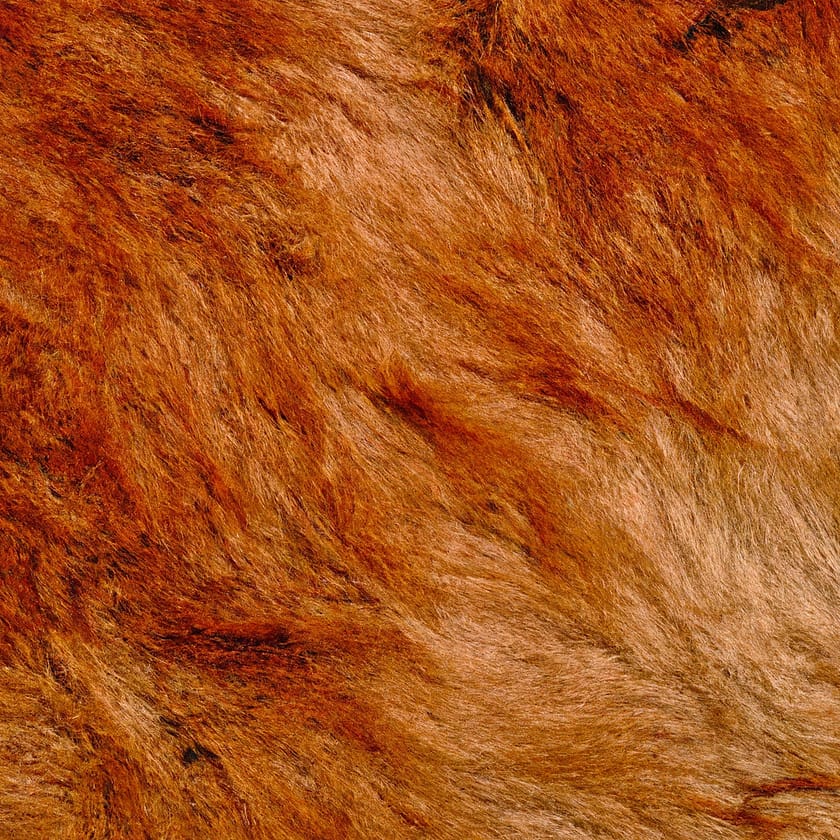How To Spot And Treat Folliculitis In Dogs
In this article, you will discover valuable insights into how to spot and effectively treat folliculitis in dogs. If you’ve noticed your furry companion experiencing skin irritations or excessive itching, it’s crucial to understand the signs and symptoms of this common condition. By familiarizing yourself with the indications of folliculitis and learning about the various treatment options available, you can provide your beloved dog with the care they need to ensure their skin stays healthy and their quality of life remains high. So, let’s explore the world of folliculitis in dogs and equip you with the knowledge to keep your four-legged friend happy and comfortable.
Understanding Folliculitis
Definition of Folliculitis
Folliculitis is a common skin condition in dogs that occurs when hair follicles become inflamed and infected. Hair follicles are the small sacs in the skin from which hair grows. When these follicles become irritated or damaged, bacteria or fungi can enter and cause an infection. This infection results in red, itchy, and sometimes painful bumps or pustules on the skin’s surface.
Causes of Folliculitis in Dogs
There are several potential causes of folliculitis in dogs. One of the main causes is bacteria, such as Staphylococcus pseudintermedius, which naturally exist on a dog’s skin but can overpopulate and cause an infection. Fungal infections, such as Malassezia, can also lead to folliculitis. Other possible causes include allergies, parasites (such as fleas or mites), hormonal imbalances, and trauma to the skin.
Symptoms of Folliculitis in Dogs
Identifying the symptoms of folliculitis is crucial for early intervention and treatment. Common signs of folliculitis in dogs include red, inflamed skin with small pustules or bumps. These pustules may contain pus or fluid and can be itchy and irritating for your furry friend. Dogs with folliculitis may scratch or bite at the affected areas, leading to secondary infections and potential discomfort. Hair loss, crusting, and scaling can also occur in more severe cases.
Diagnosing Folliculitis in Dogs
Physical Examination
When you suspect your dog may have folliculitis, schedule a visit to the veterinarian. The first step in diagnosing this condition is usually a physical examination. The vet will visually inspect your dog’s skin and check for any signs of inflammation, pustules, or other abnormalities. They may also assess your dog’s overall health and ask questions about their lifestyle and medical history.
Skin Scraping
To confirm the presence of bacteria or fungi, your veterinarian may choose to perform a skin scraping. During this diagnostic test, a small blade or spatula is used to collect a sample of skin cells and material from the affected area. The sample is then examined under a microscope to identify the presence of any bacteria, fungi, or mites that may be causing the folliculitis.
Skin Culture
In some cases, a skin culture may be necessary to determine the specific bacteria or fungus causing the folliculitis. A skin culture involves collecting a sample of the affected skin and sending it to a laboratory for testing. The lab will analyze the sample to identify the bacteria or fungus present and determine which antibiotics or antifungal medications would be most effective in treating the infection.
Biopsy
If the cause of the folliculitis is unclear or if other skin conditions are suspected, a skin biopsy may be performed. During this procedure, a small piece of skin is surgically removed from the affected area and sent to a laboratory for analysis. A skin biopsy can help rule out other underlying conditions and provide a more accurate diagnosis.

Treating Folliculitis in Dogs
Topical Treatments
For mild cases of folliculitis, topical treatments are often sufficient to resolve the infection. Your veterinarian may recommend medicated shampoos or sprays containing ingredients like chlorhexidine or benzoyl peroxide. These can help reduce inflammation, kill bacteria or fungi, and soothe your dog’s skin. It is important to follow your vet’s instructions regarding frequency and duration of use for these topical treatments.
Oral Medications
In more severe cases of folliculitis, oral medications may be necessary to combat the infection from within. Antibiotics, such as cephalexin or clindamycin, are commonly prescribed to address bacterial infections. Antifungal medications, like ketoconazole or itraconazole, are used to treat fungal folliculitis. These medications may need to be administered for several weeks, and it is crucial to complete the full course of treatment to ensure complete eradication of the infection.
Antibiotics
Antibiotics are commonly prescribed for bacterial folliculitis to eliminate the underlying infection. It is important to administer the prescribed antibiotics as directed by your veterinarian and complete the full course of treatment, even if the symptoms improve before completion. Failure to do so can result in the development of antibiotic-resistant bacteria, potentially making future infections more difficult to treat.
Antifungal Medications
In cases of fungal folliculitis, antifungal medications such as ketoconazole or itraconazole may be prescribed. These medications work by inhibiting the growth of fungi and can be highly effective in treating fungal infections. Like antibiotics, it is important to administer antifungal medications as directed by your veterinarian and complete the entire course of treatment. Failure to do so may allow the infection to persist or recur.
Preventing Folliculitis in Dogs
Maintaining Proper Hygiene
To prevent folliculitis in dogs, it is essential to maintain proper hygiene. This includes regular bathing with a mild, hypoallergenic shampoo suitable for your dog’s specific needs. Avoid using harsh chemicals or human shampoos, as they can irritate the skin and potentially exacerbate existing skin conditions. Be sure to rinse your dog thoroughly after each bath to remove any shampoo residue that could cause further skin irritation. Additionally, keeping your dog’s living area clean and free from dirt, dust, and debris can help prevent skin infections.
Regular Grooming
Regular grooming is vital for promoting healthy skin and preventing folliculitis. Brushing your dog’s coat helps remove dead hair and prevents matting, which can trap dirt and moisture close to the skin. This can be particularly important for dogs with long or dense fur. If your dog is prone to folliculitis, trimming their hair shorter may be beneficial, as it reduces the potential for trapped bacteria or fungi. Regular nail trimming and ear cleaning should also be included in the grooming routine to prevent infections.
Avoiding Irritants
Avoid exposing your dog to irritants that can worsen or trigger folliculitis. This includes chemical irritants, such as certain cleaning products or pesticides, which can irritate your dog’s skin and weaken the skin’s barrier against infections. Additionally, be cautious when introducing new products, such as bedding or toys, as your dog may have an allergic reaction. If your dog has sensitivities to certain materials or substances, it is best to avoid them to minimize the risk of folliculitis.
Maintaining a Healthy Diet
A balanced and nutritious diet plays a significant role in maintaining your dog’s overall health and promoting a strong immune system. A healthy immune system can help prevent infections, including folliculitis. Ensure your dog’s diet includes high-quality protein, essential fatty acids, and a variety of vitamins and minerals. Consult with your veterinarian to determine the most appropriate diet for your dog’s specific needs, taking into consideration factors such as age, breed, and any existing medical conditions.

Special Considerations for Different Breeds
Breeds Prone to Folliculitis
While folliculitis can occur in any dog breed, some breeds are more prone to developing this condition. Breeds with thick, dense coats, such as Poodles, Cocker Spaniels, and German Shepherds, may be more susceptible to bacterial or fungal infections due to the difficulty in keeping their skin dry and adequately grooming their fur. Breeds with skin folds, such as Bulldogs and Shar-Peis, may also be at a higher risk of folliculitis due to the increased moisture and potential for bacterial overgrowth within the folds.
Different Treatment Approaches for Different Breeds
Since certain breeds are more prone to folliculitis, treatment approaches may vary depending on the specific breed. Dogs with thick or dense coats may require more frequent bathing and grooming to keep their skin clean and dry. Breeds with skin folds may benefit from regular cleaning and drying of the folds to minimize bacterial growth. It is crucial to consult with your veterinarian to develop a treatment plan tailored to your dog’s breed and individual needs.
Alternative and Complementary Treatments
Natural Remedies
In addition to conventional treatments, some natural remedies may help alleviate symptoms and support the healing process of folliculitis. Chamomile tea can be used as a natural skin rinse to soothe inflamed skin and relieve itching. Coconut oil applied topically acts as a moisturizer and has antimicrobial properties that may help combat infections. Aloe vera gel can be used to soothe irritated skin and promote healing. While natural remedies can offer some relief, it is essential to consult with your veterinarian before using them to ensure they are safe and suitable for your dog.
Therapeutic Baths
Therapeutic baths can be beneficial for dogs with folliculitis, as they help cleanse the skin and reduce inflammation. Adding ingredients such as oatmeal, which has anti-inflammatory properties, or Epsom salts, which can help soothe itching, to your dog’s bathwater can provide relief. Be sure to follow your veterinarian’s instructions regarding frequency and duration of therapeutic baths, as excessive bathing can strip the skin of its natural oils and potentially exacerbate the condition.
Acupuncture
Acupuncture, a traditional Chinese medicine practice, involves the insertion of thin needles into specific points on the body to stimulate healing. Some pet owners and veterinarians believe that acupuncture can help alleviate the symptoms of folliculitis and promote overall wellness. Acupuncture is typically performed by qualified practitioners and should only be pursued under the guidance of a licensed veterinarian experienced in acupuncture techniques.
Herbal Supplements
Certain herbal supplements may be used as complementary treatments for folliculitis in dogs. Supplements containing ingredients like calendula, echinacea, or Oregon grape root can help boost the immune system and support the healing process. However, it is crucial to consult with your veterinarian before starting any herbal supplements, as some ingredients may interact with medications or have potential side effects.
When to Consult a Veterinarian
Persistent or Worsening Symptoms
If your dog’s folliculitis symptoms persist or worsen despite home care and treatment, it is essential to consult with a veterinarian. They can assess your dog’s condition and determine if additional or alternative treatments are necessary. A persistent or worsening infection may indicate underlying causes that require further investigation.
Severe Pain or Discomfort
If your dog is experiencing severe pain or discomfort due to folliculitis, immediate veterinary attention is necessary. Severe pain may indicate a more severe infection, the need for pain management, or the presence of other complicating factors. Your veterinarian can provide appropriate pain relief and address any underlying issues causing discomfort.
Potential Complications
Folliculitis, if left untreated or inadequately treated, can lead to various complications. If you notice any signs of complications, such as the spread of redness or inflammation, the formation of abscesses, or the development of fever or lethargy, it is crucial to seek veterinary care promptly. Complications may require more aggressive treatment approaches to prevent further health issues.
Possible Complications of Untreated Folliculitis
Skin Infections
Untreated folliculitis can lead to the spread of bacteria or fungi, resulting in secondary skin infections. These infections may be more difficult to treat and can cause additional discomfort and pain for your dog. Quick intervention and appropriate treatment can help prevent the development of secondary skin infections.
Pyoderma
Pyoderma is a term used to describe a skin infection caused by bacteria, particularly Staphylococcus pseudintermedius. If folliculitis is not properly treated, the infection can spread and result in pyoderma. Pyoderma is characterized by deep skin infections, pustules, and ulcers, which require more intensive treatment approaches.
Systemic Infection
In severe cases, untreated folliculitis can lead to a systemic infection, where bacteria or fungi enter the bloodstream and spread throughout the body. Systemic infections can be life-threatening and require immediate veterinary intervention. Prompt treatment of folliculitis can help prevent the progression to systemic infection and protect your dog’s overall health.
Conclusion
Folliculitis is a common skin condition in dogs that can cause discomfort and lead to more severe complications if left untreated. By understanding the causes, symptoms, and treatment options for folliculitis, you can provide your furry friend with the care they need. Remember to maintain proper hygiene, seek veterinary attention when necessary, and follow your veterinarian’s guidance for preventing and managing this skin condition. With early intervention and appropriate treatment, you can help your dog recover and maintain a healthy, happy life.













